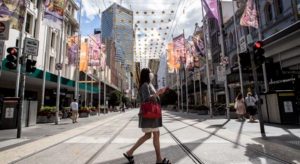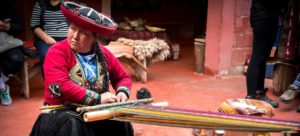The finds include mummies from many social classes, some of whom were buried alongside relatives after succumbing to disease
Eli WizevichJuly 2, 2024
:focal(325x201:326x202)/https://tf-cmsv2-smithsonianmag-media.s3.amazonaws.com/filer_public/28/90/289000b4-7cd8-411d-954f-ba7d283e7007/mummies.jpg)
Archaeologists in Egypt have discovered 33 ancient tombs built into a hillside on the west bank of the Nile, near Aswan. The graves provide a rich trove of evidence for the study of ancient burial customs, social hierarchies and diseases.
So far, excavations at the site, which dates to Egypt’s Greco-Roman period(approximately 332 B.C.E. to 395 C.E.), have uncovered families buried together and ancient oil lamps possibly left behind by mourners.
How the Meaning of Thanksgiving Has Changed
“We can imagine how spectacular it was when, for example, during the [mourners’] feast, all these tombs were illuminated,” Patrizia Piacentini, an Egyptologist and archaeologist at the University of Milan who leads excavations at the tombs, tells Live Science’s Kristel Tjandra. She adds, “It was a rich place, an important place.”
/https://tf-cmsv2-smithsonianmag-media.s3.amazonaws.com/filer_public/9a/b6/9ab63886-5970-42f7-922b-15874f520903/tomb.jpg)
The site first rose to prominence in 2015, when robberies and illegal excavations prompted Egyptian authorities to launch official digs there. Piacentini’s team, a joint Egyptian-Italian venture, began to excavate and preserve the area around the Aga Khan Mausoleum in 2018. The team has unearthed and mapped at least 300 tombs to date.
But this latest discovery is unique. The funerary rooms stretch across ten levels on the hillside; normally, tombs from this era contain just two or three levels, per Live Science.
Abdel-Moneim Said, head of the archaeological mission on the Egyptian side, tells Ahram Online’s Nevine El-Aref that members of several social classes were buried in the necropolis, with the elites, wearing bracelets and surrounded by painted tablets and terra-cotta figurines, found toward the top.
/https://tf-cmsv2-smithsonianmag-media.s3.amazonaws.com/filer_public/5f/71/5f71fc4e-9e3a-42a2-807c-f596048861aa/mummy_head.jpg)
In a statement, the Egyptian Ministry of Tourism and Antiquities notes that around a third of the recently discovered remains belong to newborns or children. Many of these young mummies were discovered next to older ones, suggesting family burials.
The researchers partnered with the Aswan University Hospital to conduct in-depth investigations into the causes of death of the people buried in the tombs. Early results from X-rays, DNA analyses and CT scans show that anemia, malnutrition, tuberculosis and osteoporosis were prevalent across the populations studied, even among the higher social classes.
Given the frequent side-by-side burials of fathers, mothers and children at the site, Piacentini tells Live Science that these diseases might have killed entire households in a single sweep.
Still, many questions about the site and the family structures and diseases observed there remain.
In one case, the archaeologists mistakenly identified two brothers buried with their parents as a mother-son duo. They also have yet to determine why two bodies were glued together in a single stone coffin and need to undertake further research to determine the pair’s exact relationship.
Animated by these mysteries, the Egyptian-Italian research team believes the discoveries are “very promising, with many, many new aspects we are trying to understand,” Piacentini says to Live Science.
Get the latest stories in your inbox every weekday.




